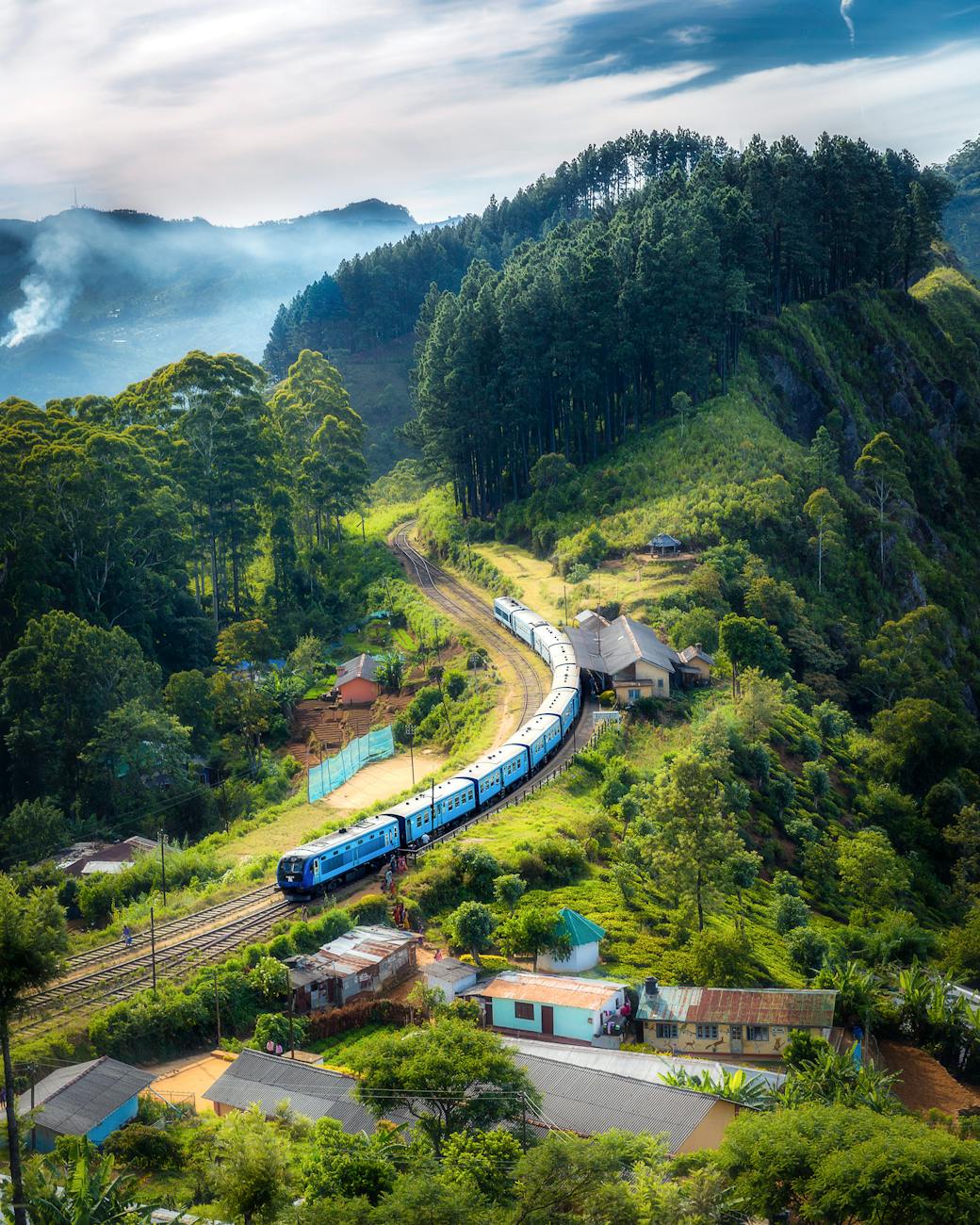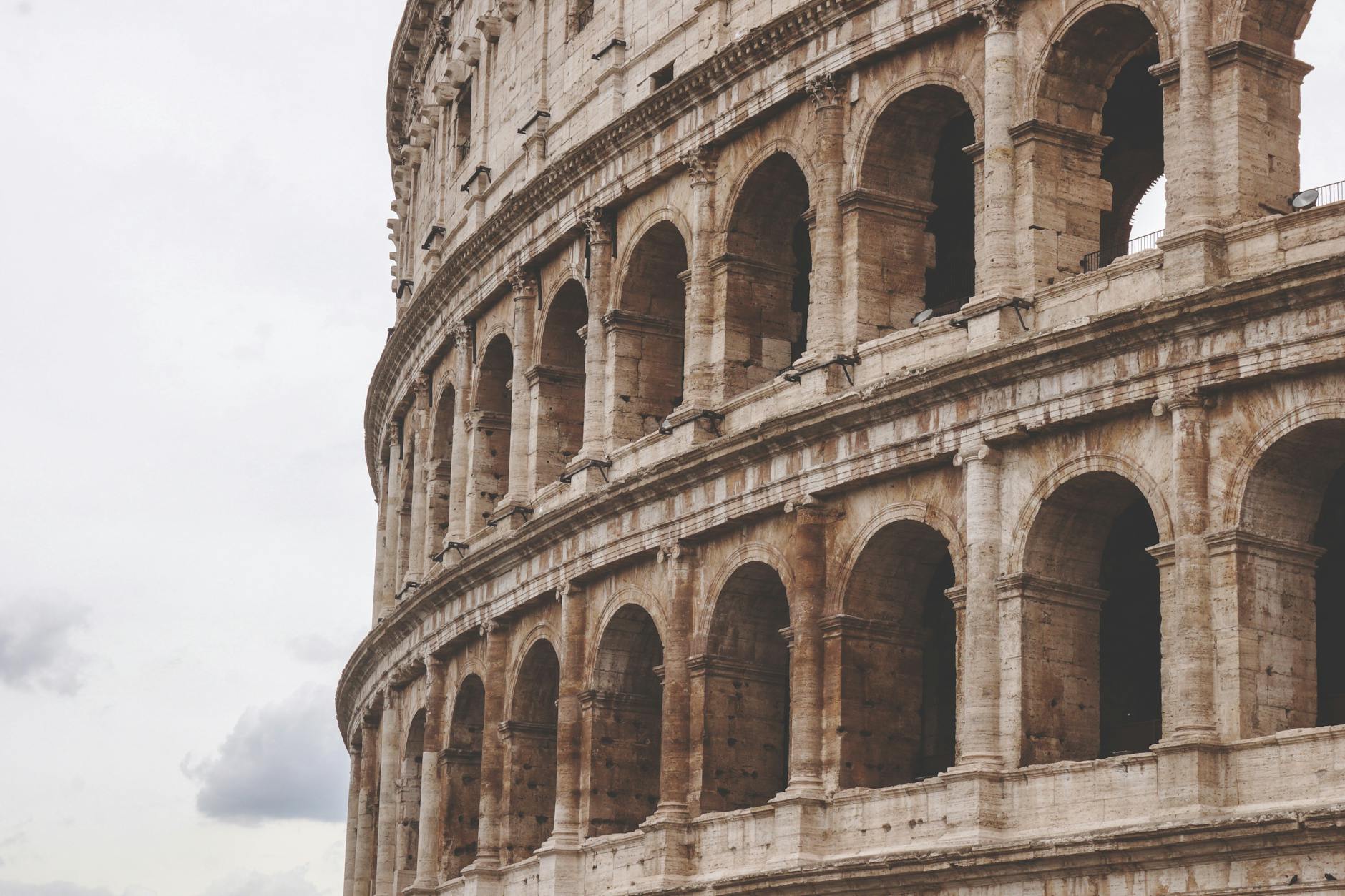There is something quietly magical about traveling by train. Windows frame the landscape like moving paintings. Time slows. Luggage tucks away and the scenery becomes the main event. From high-mountain passes and coastal cliffs to deserts and jungle valleys, some of the world’s most memorable views are best enjoyed from a carriage. Here are a dozen scenic train routes that reward slow travel, with practical details, travel tips, and what to expect on each line.
1. Glacier Express – Switzerland
Route: Zermatt ↔ St. Moritz / Davos
Approx. distance & time: ~290 km, ~7.5–8 hours
Highlights: Alpine peaks, deep gorges, 91 tunnels and 291 bridges, Oberalp Pass
Why ride: Called “the slowest express train in the world,” the Glacier Express is a showcase for Swiss mountain scenery. Large panoramic windows (and seasonal glass-roof carriages) transform the trip into a full-day photo safari.
Best time: Summer (wildflowers, green valleys) and winter (snow-clad landscapes, festive villages). Spring and autumn can be quieter and very atmospheric.
Tips: Book panoramic seats in advance; bring layered clothing (mountain weather changes fast).
2. Bernina Express – Switzerland → Italy
Route: Chur / Davos ↔ Tirano (Italy) via St. Moritz
Approx. distance & time: ~144 km, ~4 hours
Highlights: Bernina Range, UNESCO-listed RhB (Rhaetian Railway) line, Landwasser Viaduct, Bernina Pass glaciers
Why ride: Dramatic alpine transitions from icy peaks to Mediterranean valleys in a single day. The line’s engineering and scenery are UNESCO-recognized.
Best time: Summer for contrast of ice and green meadows; winter for snowy drama.
Tips: Upgrade to panoramic carriages; buy a Swiss Travel Pass if visiting multiple lines.
3. Flam Railway (Flåm Line) – Norway
Route: Flåm ↔ Myrdal
Approx. distance & time: 20 km, ~50 minutes
Highlights: Steep descent into Aurlandsfjord, waterfalls (Kjosfossen), fjords, dramatic gradients
Why ride: Short but spectacular — one of the steepest standard-gauge lines in the world. The train climbs from sea level into mountain passes with dramatic viewpoints.
Best time: Late spring to early autumn for accessible hikes and long daylight; winter offers Northern lights potential but limited services.
Tips: Combine with a fjord cruise; bring waterproof layers for waterfall spray.
4. West Highland Line & The Jacobite – Scotland
Route: Glasgow ↔ Fort William ↔ Mallaig (West Highland Line) / Fort William ↔ Mallaig (Jacobite steam)
Approx. distance & time: Glasgow to Mallaig ~260 km, ~5–6 hours; Jacobite ~64 km, ~2 hours
Highlights: Rannoch Moor, Glenfinnan Viaduct (famous Harry Potter bridge), rugged lochs and coastlines
Why ride: Wild Scottish landscapes, remote moorlands and steam-era romance on the Jacobite heritage train.
Best time: Summer for long days and full services; shoulder seasons bring moodier skies and fewer crowds.
Tips: Reserve seats for the Jacobite early (it sells out); allow time for photos at Glenfinnan.
5. Rocky Mountaineer – Canada
Route(s): Vancouver ↔ Banff / Jasper / Lake Louise (multiple routes)
Duration: 1–2 days (daylight travel only; overnight stops in hotels)
Highlights: Spiral Tunnels, Fraser Canyon, mountain peaks, turquoise glacier lakes
Why ride: Luxury daytime rail travel through the Canadian Rockies with narrated commentary and excellent service; overnight stops allow sightseeing.
Best time: Late spring to early autumn (May–October).
Tips: Book early and consider the “GoldLeaf” service for a bi-level dome experience; pack binoculars.
6. The Ghan – Australia
Route: Adelaide ↔ Darwin
Approx. distance & time: ~2,979 km, ~48–54 hours (2 nights)
Highlights: Red Centre outback, plains of South Australia, Katherine Gorge, remote stations
Why ride: An epic cross-continent journey that reveals Australia’s interior contrasts, from vineyards to monsoonal tropics. The Ghan is part-journey, part-overnight expedition.
Best time: Dry season (May–September) to avoid heavy rains in the north.
Tips: Book a cabin for overnight comfort; prepare for remote stops and optional off-train excursions.
7. Trans-Siberian Railway – Russia (and beyond)
Route: Moscow ↔ Vladivostok (with branches to Beijing and Mongolia)
Approx. distance & time: Moscow to Vladivostok ~9,289 km, ~6–8 days nonstop (many travelers break the trip up)
Highlights: Endless taiga, Ural Mountains, Lake Baikal (Irkutsk/Ulan-Ude stop), Siberian steppe
Why ride: The world’s longest continuous rail line and a classical overland adventure. It’s as much about culture and endurance as scenery.
Best time: Late spring to early autumn (roads and services are more reliable; Lake Baikal is accessible).
Tips: Consider breaking the trip into sectors; learn basic Cyrillic or carry phrasebooks; prepare visas where required.
8. The Coastal Pacific / Coast Starlight – USA
Route: Coast Starlight (Seattle ↔ Los Angeles) / Coastal Pacific (New Zealand). Both offer coastal mountain views
Duration: Coast Starlight ~35 hours end to end; Coastal Pacific ~6–8 hours seasonally
Highlights: Pacific coastline, temperate rainforests, dramatic bridges, rolling farmland
Why ride: Long-distance American rail combines city-to-city convenience with dramatic Pacific views; New Zealand’s Coastal Pacific (Picton–Christchurch) is compact but scenic.
Best time: Spring–autumn for temperate weather; check seasonal schedules.
Tips: Overnight for Coast Starlight with sleeper accommodation; bring snacks and layers for coastal breezes.
9. Tren a las Nubes (Train to the Clouds) – Argentina
Route: Salta ↔ La Polvorilla Viaduct (partial tourist route)
Approx. distance & time: Tourist excursions vary; reach altitudes above 4,000 m on some legs
Highlights: High Andean plateau, desert landscapes, dramatic viaducts and mountain vistas
Why ride: High-altitude drama and vintage rail charm in Argentina’s northwestern Andes.
Best time: Dry season (May–September) to avoid heavy rains and landslides.
Tips: Acclimatize gradually to high altitudes; bring sun protection and warm layers.
10. Darjeeling Himalayan Railway – India
Route: New Jalpaiguri / Siliguri ↔ Darjeeling
Approx. distance & time: ~88 km, typically several hours due to zig-zag climbs (timings vary)
Highlights: Narrow-gauge engineering, tea garden views, mountain villages, colonial stations
Why ride: A short, nostalgic mountain journey with toy-train charm; UNESCO recognition for cultural and engineering value.
Best time: October–March for clear mountain views.
Tips: Expect slow speeds and local crowds; combine with tea garden visits and walks.
11. Hiram Bingham / Machu Picchu Train – Peru
Route: Cusco / Ollantaytambo ↔ Aguas Calientes (Machu Picchu gateway)
Duration: 1.5–4 hours depending on departure point and service
Highlights: Andean valleys, Urubamba River, highland scenery, final approach to Machu Picchu
Why ride: Scenic, comfortable access to one of the world’s iconic archaeological sites. Luxury and standard services are available.
Best time: Dry season (May–September) for fewer rains at Machu Picchu.
Tips: Book return train and Machu Picchu entry in advance; pack rain gear during shoulder seasons.
12. Rovos Rail & Blue Train – Southern Africa (luxury examples)
Route: Various scenic itineraries across South Africa, Namibia, Botswana
Duration: Multi-day journeys
Highlights: Karoo plains, vineyards, desert expanses, game reserves
Why ride: Classic luxury rail with elegant dining and off-train safaris or vineyard visits, scenic travel at slow pace.
Best time: Dry winter months (May–September) for wildlife viewing and clear skies.
Tips: These are premium experiences. Book early and check included excursions.
Practical Tips for Scenic Train Travel
- Book early for panoramic seats, sleepers, or luxury cabins, high-demand routes fill fast.
- Choose daytime travel on panoramic lines where possible; overnight portions often lose the view.
- Pack layers and sun protection, mountain and coastal weather can change rapidly.
- Bring snacks and refillable water even if the train offers meals; options can be limited in remote sectors.
- Camera essentials: spare batteries, a polarizing filter to reduce glare, and a small tripod or stabilizer for low-light shots.
- Local currency & documentation: keep small change for station kiosks and tips; check visa requirements for transnational routes (e.g., Trans-Siberian).
The Psychological Perks of Traveling by Train
Slow, scenic rail travel does more than show beautiful views. It offers reduced travel stress, time for reflection, and a gentler pace that can improve mood and creativity. Watching landscapes unfold builds a sense of continuity and place, which many travelers find restorative. Shared compartments and dining cars also invite conversations and cultural exchange, travel that feels human at eye level.
Final Thoughts
Scenic train routes deliver more than transport, they create travel memories that linger. Whether seeking the alpine perfection of Switzerland, the steam romance of Scotland, the outback vastness of Australia, or the endless Siberian horizon, there is a rail journey to match every appetite for wonder. Plan with seasons and services in mind, prioritize comfort on long legs, and remember: the best journeys are often the ones that allow time to watch the world pass by.
Disclaimer: This article is for informational purposes only. Route times and services vary seasonally and by operator. Verify up-to-date schedules, fares, and travel requirements with official rail operators or trusted booking platforms before travel. Health and visa rules may apply for international segments.



